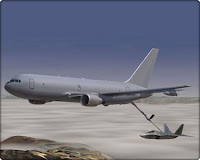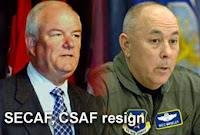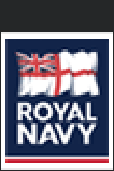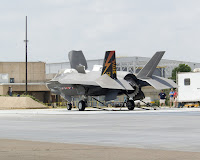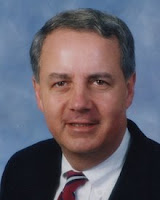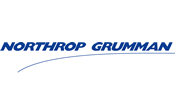



Raytheon Announces Executive Appointments; Retirement of Louise L. Francesconi
- Louise L. Francesconi to Retire from Company, effective September 1
- Dr. Taylor W. Lawrence Named President, Raytheon Missile Systems
- Mark E. Russell Named VP of Engineering, Technology and Mission Assurance
- Lynn A. Dugle Named VP and Deputy General Manager of Raytheon
Intelligence and Information Systems
WALTHAM, Mass., June 2, 2008 /PRNewswire-FirstCall/ --
Raytheon Company(
NYSE: RTN) made several executive announcements today, including a
leadership transition at the company's Missile Systems business and the
appointment of two new corporate officers.
Louise L. Francesconi has announced her plans to retire from the
company, effective September 1. Succeeding Francesconi is Dr. Taylor W.
Lawrence, 44, who has been named president, Raytheon Missile Systems (RMS),
effective July 1. Francesconi will work with Lawrence as he transitions
into this new role until her retirement date. Raytheon Missile Systems is
headquartered in Tucson, Ariz.
"Taylor's deep technical expertise, operational leadership and process
discipline will serve our customers and our company well as we look to an
exciting future for the Missile Systems business," said William H. Swanson,
Chairman and Chief Executive Officer of Raytheon. "I want to thank Louise
for her outstanding service and congratulate her on a long and
distinguished career. On behalf of the entire company, I wish her all the
best in her pending retirement."
Francesconi is retiring from Raytheon after a distinguished 33 years
with the company. Her expertise in strategic planning, customer focus and
operational excellence has been instrumental in making Raytheon the world's
preeminent producer of advanced missile systems for the U.S. military and
the allied forces of more than 50 countries around the world. Francesconi
will continue to reside in Tucson.
Lawrence joined Raytheon in 2006 and currently serves as vice president
of Engineering, Technology and Mission Assurance at Raytheon Company
headquarters in Waltham, Mass., where he has guided the company's vision
and provided corporate leadership in the areas of technology and research,
engineering, operations, performance excellence, Raytheon Six Sigma(TM) and
Mission Assurance. He has had responsibility for 45,000 engineers across
the company working on more than 8,000 programs.
Prior to joining Raytheon, Lawrence served as a divisional vice
president and general manager at Northrop Grumman. He has also served as
the staff director for the Select Committee on Intelligence for the U.S.
Senate and was deputy director of the Information Systems Office of the
Defense Advanced Research Projects Agency. Lawrence currently serves as
vice chairman of the Air Force Studies Board of the National Academies.
Lawrence holds a bachelor's degree in physics from the California
Institute of Technology and a master's degree in applied physics from
Stanford University. He earned his Ph.D. in applied physics from Stanford
in 1992.
Russell Named Vice President of Engineering, Technology and Mission
Assurance
Raytheon Company has named Mark E. Russell, 46, vice president,
Engineering, Technology and Mission Assurance, effective July 1. Russell,
who has been elected a company officer by the Board of Directors, succeeds
Dr. Taylor W. Lawrence and will report directly to Raytheon Chairman and
CEO William H. Swanson. In his new role, he will guide the company's vision
and provide corporate leadership in the areas of technology and research,
engineering, operations, performance excellence, Raytheon Six Sigma(TM) and
Mission Assurance. He will have responsibility for 45,000 engineers across
the company working on more than 8,000 programs.
"Mark has the right combination of both leadership and technical
expertise to excel in this new role," said Swanson. "His visionary approach
to technology and demonstrated program performance will be vital elements
to our success and that of our customers."
Russell joined Raytheon in 1983 after graduating from the University of
Massachusetts with a bachelor's degree in electrical engineering. He then
returned to the University of Massachusetts under the Raytheon Advanced
Study scholarship program and earned his master's degree in electrical
engineering. Since starting in design engineering, he has worked in
operations, field testing, project and program management for
state-of-the-art radar, missile and communication systems. His most recent
assignment was vice president, Engineering for Raytheon's Integrated
Defense Systems (IDS) business, where he was responsible for engineering
development, including the capture and management of technology and
advanced programs, production of advanced semiconductor products, and
continuous improvement of processes and tools.
In addition to his professional accomplishments, Russell serves on the
Board of Directors of the National Action Council for Minorities in
Engineering (NACME) and is a senior member of both the American Institute
of Aeronautics and Astronautics (AIAA) and the Institute of Electrical and
Electronics Engineers (IEEE). He has been awarded multiple U.S. patents and
published numerous peer-reviewed technical articles. Russell was the
recipient of the Distinguished Alumni Award from UMass Amherst in 2006 and
inducted into the Francis Academy of Distinguished Engineers at UMass
Lowell in 2001.
Dugle Named VP and Deputy General Manager of Intelligence and Information
Systems Business Raytheon has also named Lynn A. Dugle, 48, vice president, deputy
general manager of Raytheon's Intelligence and Information Systems (IIS)
business, effective July 1. Dugle, who has been elected a company officer
by the Board of Directors, will report to Raytheon IIS President, Michael
D. Keebaugh.
Commenting on Dugle's appointment, Swanson said, "Lynn brings a
tremendous record of achievement to her new role at IIS, where she will
leverage her technical knowledge and leadership skills to deliver
innovative solutions for our customers."
Dugle currently serves as vice president, Engineering, Technology and
Quality for Raytheon's Network Centric Systems (NCS) business, where she is
responsible for the strategic direction, leadership and operations of the
function.
Prior to joining Raytheon in 2004, Dugle held a wide range of
challenging, officer-level positions with ADC Telecommunications. While
headquartered in Australia, Dugle was responsible for leading teams in
Europe and the Asia Pacific region. Dugle's previous international
experience includes managing design and production facilities in Austria
and Argentina.
Dugle began her career at Texas Instruments in 1982 as a program
engineer and rose to vice president of quality for the Defense Systems and
Electronics Group. While at Texas Instruments she held positions in
manufacturing, operations, supply chain management, quality, financial
analysis, strategic planning and productivity programs.
Dugle serves on the Raytheon Australia Board of Directors, the Southern
Methodist University Graduate program Board of Knowledge, and the Texans
Credit Union Board of Directors. She has held prior Board positions with
the Collin County Red Cross, Collin County March of Dimes, and the Dallas
Metropolitan Area United Way.
Dugle earned two degrees from Purdue University, including a bachelor's
degree in technical management, and a bachelor's degree in Spanish. She
earned her master's in business administration from the University of Texas
at Dallas.
